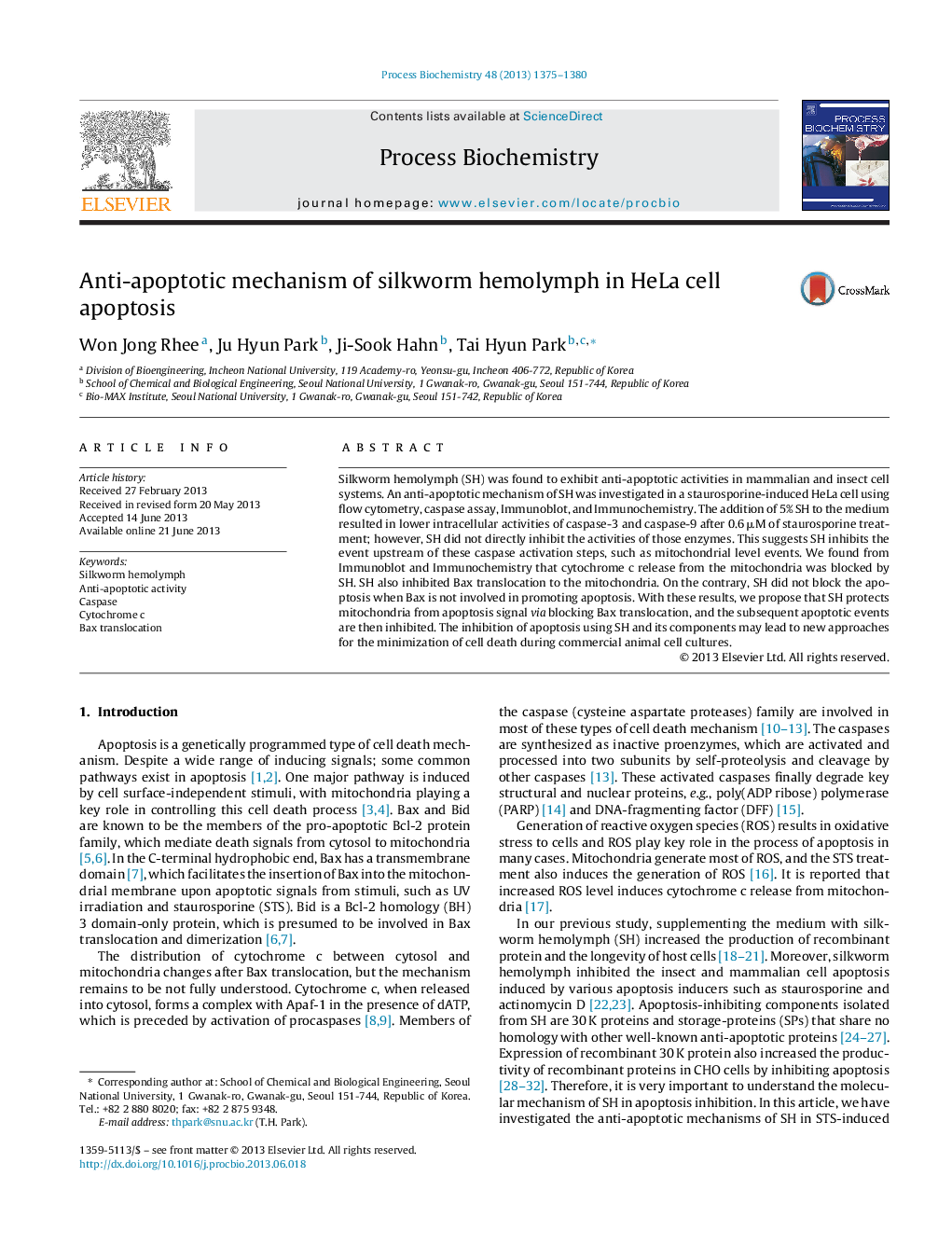| Article ID | Journal | Published Year | Pages | File Type |
|---|---|---|---|---|
| 34632 | Process Biochemistry | 2013 | 6 Pages |
•Silkworm hemolymph inhibits the apoptosis and the production of reactive oxygen species.•Silkworm hemolymph suppresses the activation of caspase-3 as well as caspase-9.•Silkworm hemolymph blocks Bax translocation to mitochondria.•We investigated that SH inhibits apoptosis by protecting mitochondria from apoptosis signal.
Silkworm hemolymph (SH) was found to exhibit anti-apoptotic activities in mammalian and insect cell systems. An anti-apoptotic mechanism of SH was investigated in a staurosporine-induced HeLa cell using flow cytometry, caspase assay, Immunoblot, and Immunochemistry. The addition of 5% SH to the medium resulted in lower intracellular activities of caspase-3 and caspase-9 after 0.6 μM of staurosporine treatment; however, SH did not directly inhibit the activities of those enzymes. This suggests SH inhibits the event upstream of these caspase activation steps, such as mitochondrial level events. We found from Immunoblot and Immunochemistry that cytochrome c release from the mitochondria was blocked by SH. SH also inhibited Bax translocation to the mitochondria. On the contrary, SH did not block the apoptosis when Bax is not involved in promoting apoptosis. With these results, we propose that SH protects mitochondria from apoptosis signal via blocking Bax translocation, and the subsequent apoptotic events are then inhibited. The inhibition of apoptosis using SH and its components may lead to new approaches for the minimization of cell death during commercial animal cell cultures.
